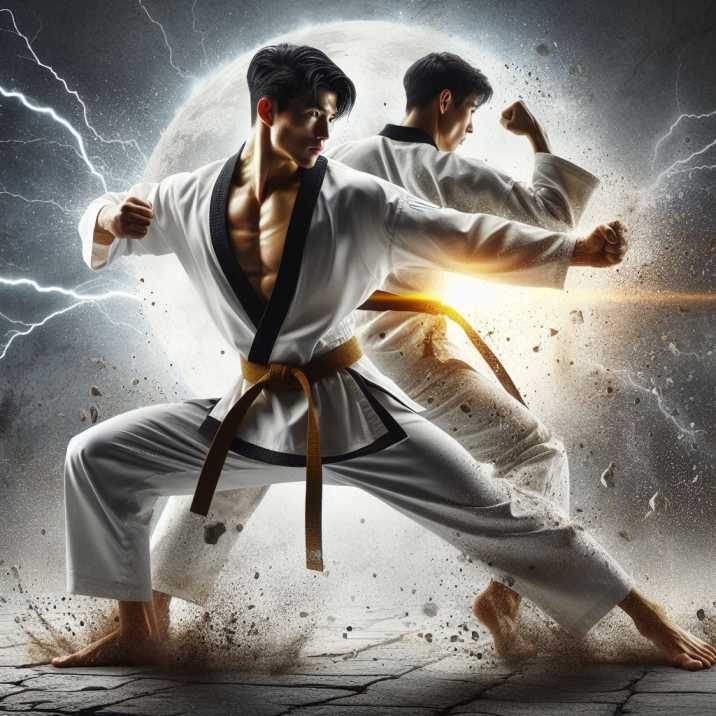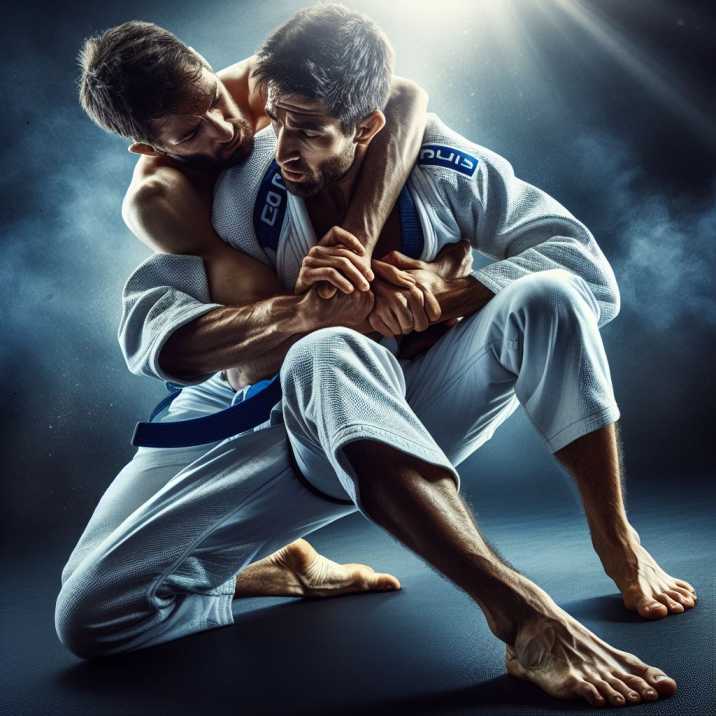Introduction:
Table of Contents
Taekwondo vs jiu jitsu
In the vast realm of martial arts, two disciplines stand out for their unique approaches to combat and self-defense: Taekwondo and Jiu Jitsu. While both arts boast rich histories and devoted practitioners, they differ significantly in techniques, philosophies, and training methodologies. Join us as we delve into the distinct characteristics of Taekwondo vs Jiu Jitsu, shedding light on their respective strengths and applications.
Origins and History: Taekwondo vs jiu jitsu
Taekwondo:
Originating in Korea, Taekwondo is a traditional martial art with roots tracing back over two thousand years. It was officially recognized as a martial art in 1955, evolving from ancient Korean forms such as Taekkyeon and Subak.
Jiu Jitsu:
Jiu Jitsu, on the other hand, has its origins in Japan, dating back to the Samurai era. It emerged as a system of unarmed combat techniques for warriors to use when disarmed on the battlefield.
Techniques and Focus:
Taekwondo:
Taekwondo emphasizes high kicks, fast footwork, and powerful strikes. Practitioners focus on developing strong legs and executing dynamic movements, making it an ideal discipline for those seeking an explosive and athletic form of martial arts.

Jiu Jitsu:
Jiu Jitsu, also known as Brazilian Jiu Jitsu (BJJ), places a primary focus on grappling techniques, ground fighting, and submissions. Practitioners learn how to control opponents through leverage and technique, making it suitable for individuals looking for a strategic and ground-based approach to combat.

Philosophy and Approach:
Taekwondo:
Taekwondo embodies the principles of courtesy, integrity, perseverance, self-control, and indomitable spirit. It emphasizes discipline, respect, and humility, instilling important values that extend beyond the training mat and into everyday life.
Jiu Jitsu:
Jiu Jitsu emphasizes the concept of leverage and technique over brute strength. It teaches practitioners to remain calm and composed, even in the face of adversity, and to use their opponent’s energy against them.
Training and Belt Systems:
Taekwondo:
Taekwondo follows a colored belt system, with practitioners progressing from white belt (beginner) to black belt (expert) through a series of belt tests and promotions. Each belt level signifies a deeper understanding of techniques and principles.
Jiu Jitsu:
Jiu Jitsu also follows a belt system, but it typically starts with a white belt and progresses to blue, purple, brown, and finally black belt. Unlike Taekwondo, belt promotions in Jiu Jitsu are often based on skill level and performance in sparring and competitions.
Competition and Rules:
Taekwondo:
Taekwondo competitions involve point sparring, where practitioners earn points for clean strikes to specific target areas. Knockouts are rare, and matches are typically scored based on technique, control, and sportsmanship.
Jiu Jitsu:
Jiu Jitsu competitions take place on the ground, with practitioners aiming to submit their opponents through joint locks or chokes. Matches can end by submission or points, with points awarded for takedowns, positional control, and submission attempts.
Self-Defense and Real-Life Applications:
Taekwondo:
Taekwondo emphasizes quick and powerful strikes, making it effective for self-defense situations where speed and agility are crucial. Practitioners learn to defend against multiple attackers and to use their surroundings to their advantage.
Jiu Jitsu:
Jiu Jitsu focuses on ground fighting and submissions, making it ideal for self-defense scenarios where the fight goes to the ground. Practitioners learn how to control and neutralize opponents without relying on striking techniques.
Benefits and Considerations:
Taekwondo:
Benefits of Taekwondo include improved physical fitness, increased flexibility, enhanced balance and coordination, and boosted confidence and self-esteem. It is suitable for individuals of all ages and fitness levels.
Jiu Jitsu:
Benefits of Jiu Jitsu include improved problem-solving skills, enhanced mental focus and discipline, increased cardiovascular endurance, and stress relief. It is a physically demanding art that requires dedication and perseverance.
Conclusion:
In conclusion, both Taekwondo vs Jiu Jitsu offer unique benefits and cater to different preferences and goals. Taekwondo excels in dynamic striking techniques and athleticism, while Jiu Jitsu focuses on ground fighting and submission grappling. Whether you’re drawn to the explosive kicks of Taekwondo or the intricate grappling of Jiu Jitsu, both martial arts provide valuable lessons in discipline, respect, and self-improvement.
Frequently Asked Questions (FAQs):
- What is the difference between Taekwondo vs Jiu Jitsu?
- Answer: Taekwondo focuses on striking techniques such as kicks and punches, emphasizing speed and agility. Jiu Jitsu, on the other hand, emphasizes ground fighting and submissions, focusing on leverage and technique.
- Which martial art is more effective for self-defense: Taekwondo vs Jiu Jitsu?
- Answer: Both martial arts have their strengths in self-defense. Taekwondo’s emphasis on quick strikes can be effective in fending off attackers, while Jiu Jitsu’s ground fighting techniques are useful for controlling opponents in close quarters.
- Can I practice both Taekwondo and Jiu Jitsu simultaneously?
- Answer: Yes, many practitioners choose to train in both Taekwondo and Jiu Jitsu to develop a well-rounded skill set. However, it’s important to manage training schedules and ensure proper recovery to avoid overtraining.
- What are the main principles of Taekwondo vs Jiu Jitsu?
- Answer: Taekwondo emphasizes courtesy, integrity, perseverance, self-control, and indomitable spirit. Jiu Jitsu focuses on leverage, technique, patience, and mental toughness.
- How long does it take to earn a black belt in Taekwondo versus Jiu Jitsu?
- Answer: The time to earn a black belt varies depending on the individual’s dedication and training frequency. In Taekwondo, it typically takes several years of consistent training. In Jiu Jitsu, it can take anywhere from 8 to 12 years on average.
- Is Taekwondo or Jiu Jitsu better for children?
- Answer: Both martial arts can be beneficial for children, but it ultimately depends on the child’s preferences and goals. Taekwondo may appeal to children who enjoy dynamic movements and kicking techniques, while Jiu Jitsu may appeal to those who prefer ground grappling.


